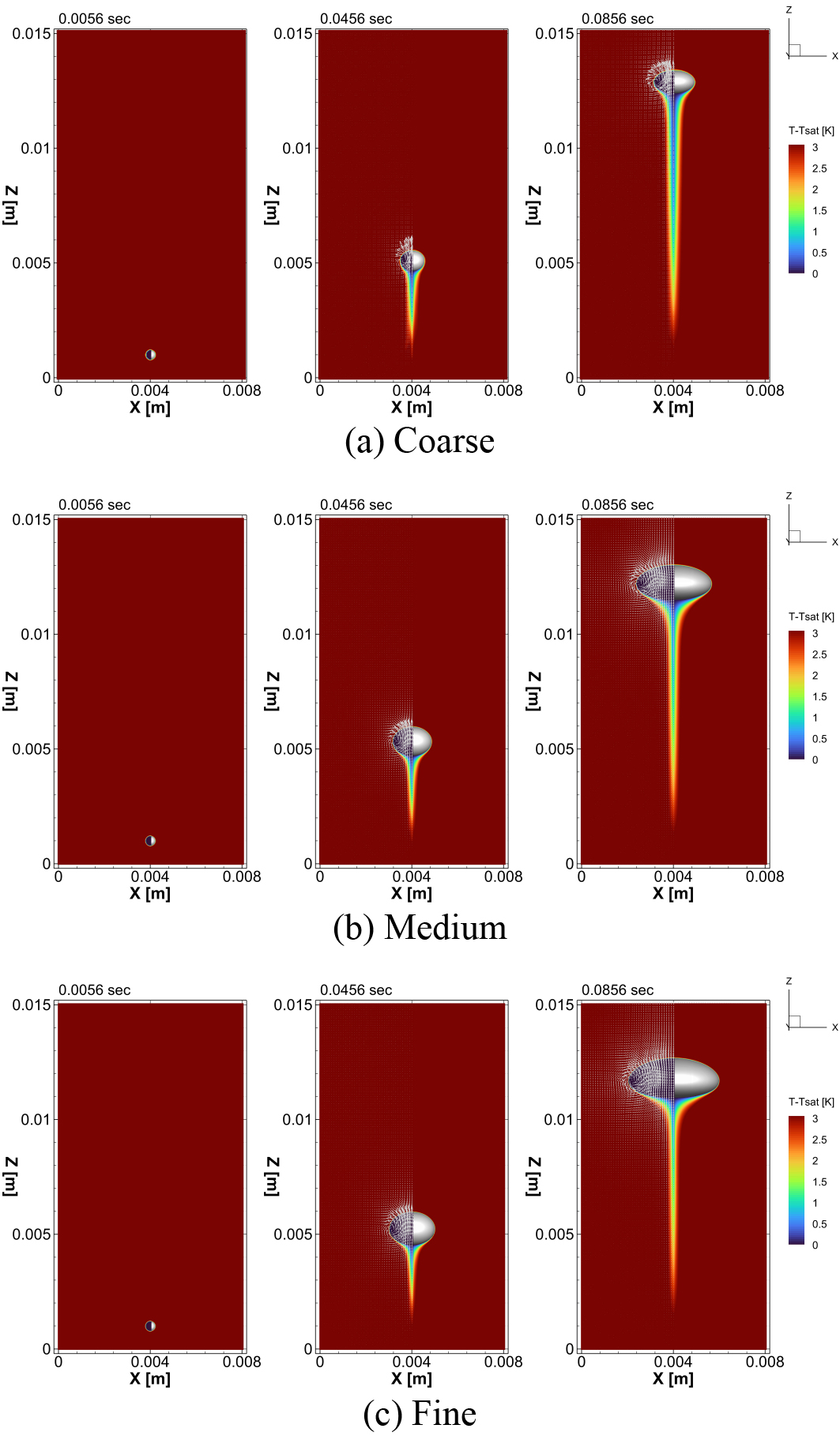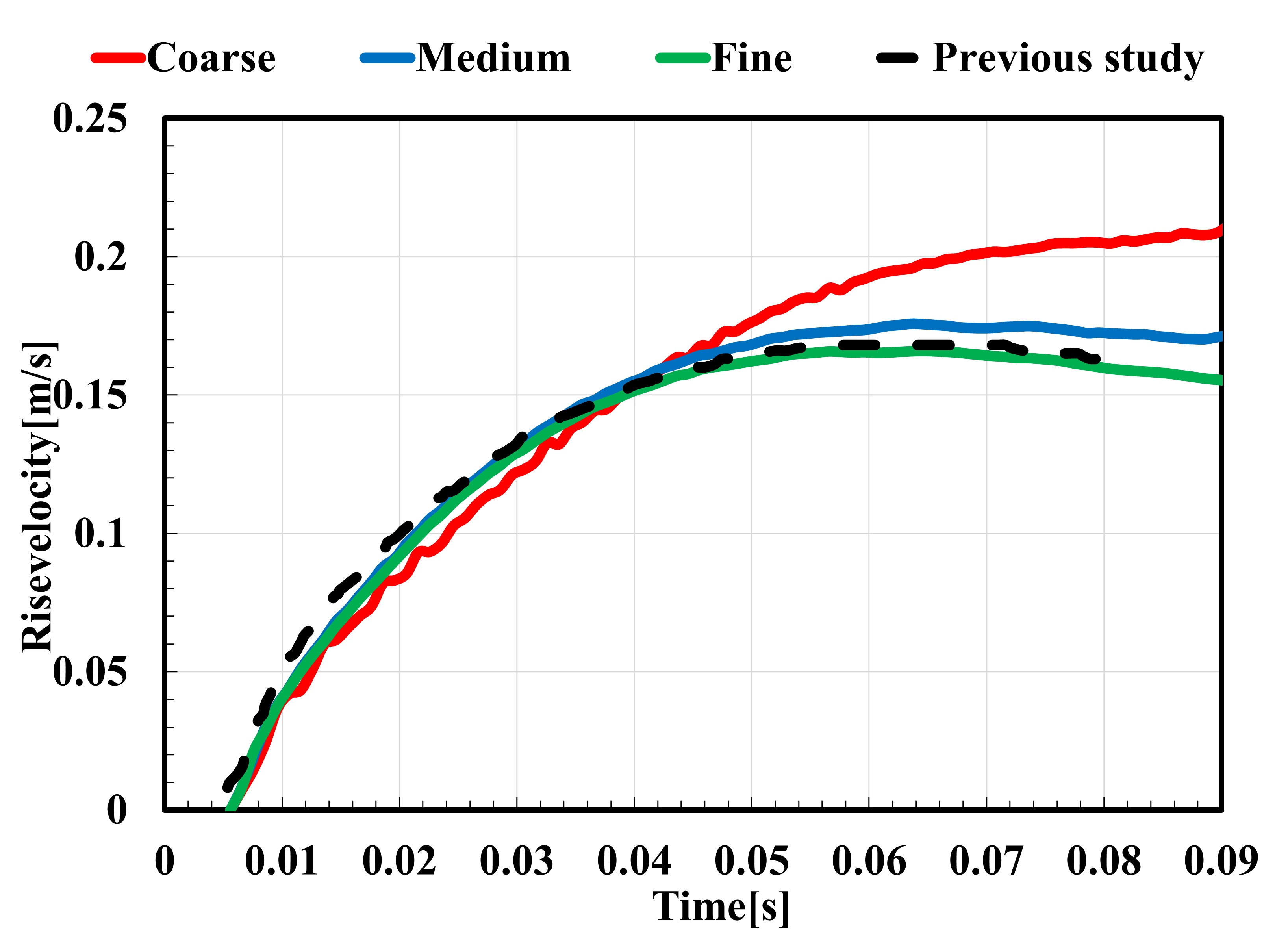Prediction of Flow Behavior in a Heat Pipe Using Two-Phase Flow Simulation Considering Phase Change
JAXA Supercomputer System Annual Report February 2024-January 2025
Report Number: R24EACA66
Subject Category: JSS Inter-University Research
- Responsible Representative: Hiroshi Kimura, Professor, Micro/Nano technical center, Tokai University
- Contact Information: Yuki Kawamoto(kawamoto.yuki.u@tokai.ac.jp)
- Members: Katsuki Hirai, Yuki Kawamoto, Hiroshi Kimura
Abstract
Heat pipes, which transport heat through the flow of a working fluid that undergoes a phase change due to evaporation and condensation, are used not only in familiar electronic devices but also in devices that are expected to be used in space. Since the fluid is enclosed inside a metal pipe, it is difficult to obtain physical quantities other than the outer wall temperature. Therefore, Computational Fluid Dynamics (CFD) is considered to be effective in understanding and predicting the internal flow. In this study, we aim to realize more efficient heat transport by making it possible to predict the flow inside a heat pipe. This year, a three-dimensional analysis was conducted to verify the accuracy of phase change model, which is the operating principle of a heat pipe.
Reference URL
N/A
Reasons and benefits of using JAXA Supercomputer System
In phase change calculations, the accuracy of the temperature gradient formed near the gas-liquid interface is directly related to the calculation of the amount of phase change, so it is necessary to ensure high resolution near the interface. Therefore, a large-scale parallel analysis on the JAXA supercomputer is essential.
Achievements of the Year
This year, as a basic verification of the phase change, we performed a three-dimensional upward bubble analysis of the superheat state under gravity. Figure 1 shows the superheat distribution with velocity vectors at 0.0856 sec for three different grid resolutions: (a) Coarse, (b) Medium, (c) at Fine grid resolution. Compared to the previous study, good qualitative agreement was confirmed for the medium and fine grid resolutions. Quantitative evaluation was performed using the bubble rise rate shown in Figure 2. Under the fine grid condition, good agreement was confirmed quantitatively with the previous study. These results confirm the accuracy of the phase change in this analysis.

Fig.1: Superheat distribution showing velocity vectors for each grid resolution: (a) Coarse, (b) Medium, and (c) Fine

Fig.2: Bubble rise velocity at each grid resolution (Previous study: Y. Sato, and B. Niceno, A sharp-interface phase change model for a mass-conservative interface tracking method, Journal of Computational Physics., 249 (2013), 127-161.)
Publications
N/A
Usage of JSS
Computational Information
- Process Parallelization Methods: MPI
- Thread Parallelization Methods: OpenMP
- Number of Processes: 480
- Elapsed Time per Case: 190 Hour(s)
JSS3 Resources Used
Fraction of Usage in Total Resources*1(%): 0.06
Details
Please refer to System Configuration of JSS3 for the system configuration and major specifications of JSS3.
| System Name | CPU Resources Used(Core x Hours) | Fraction of Usage*2(%) |
|---|---|---|
| TOKI-SORA | 1710222.31 | 0.08 |
| TOKI-ST | 308.32 | 0.00 |
| TOKI-GP | 0.00 | 0.00 |
| TOKI-XM | 0.00 | 0.00 |
| TOKI-LM | 0.00 | 0.00 |
| TOKI-TST | 0.00 | 0.00 |
| TOKI-TGP | 0.00 | 0.00 |
| TOKI-TLM | 0.00 | 0.00 |
| File System Name | Storage Assigned(GiB) | Fraction of Usage*2(%) |
|---|---|---|
| /home | 0.00 | 0.00 |
| /data and /data2 | 30620.00 | 0.15 |
| /ssd | 5020.00 | 0.27 |
| Archiver Name | Storage Used(TiB) | Fraction of Usage*2(%) |
|---|---|---|
| J-SPACE | 0.00 | 0.00 |
*1: Fraction of Usage in Total Resources: Weighted average of three resource types (Computing, File System, and Archiver).
*2: Fraction of Usage:Percentage of usage relative to each resource used in one year.
ISV Software Licenses Used
| ISV Software Licenses Used(Hours) | Fraction of Usage*2(%) | |
|---|---|---|
| ISV Software Licenses(Total) | 0.35 | 0.00 |
*2: Fraction of Usage:Percentage of usage relative to each resource used in one year.
JAXA Supercomputer System Annual Report February 2024-January 2025


